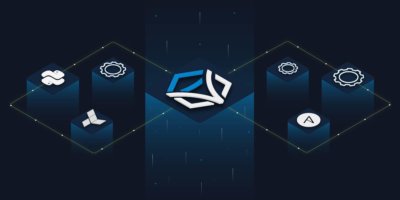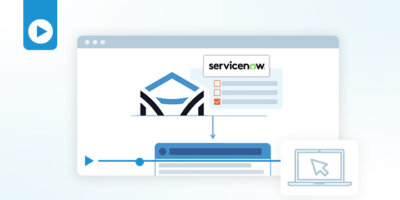In the 2022 Gartner Market Guide for Network Automation Tools, Andrew Lerner and Ted Corbett identified four key findings, which are important for every network practitioner to be aware of as it documents the prominent shift in how the way we operate networks is changing – from a ClickOps focused world into a NetDevOps focused one. As the evolution into network automation continues, it’s critically important for network practitioners, at all levels, to understand how they can leverage their existing network knowledge and experience and transition all of those assets into becoming network automation experts.
4 Reasons You Need to Make the Shift to NetDevOps
Let’s take a quick look at each finding and why they are crucial for network teams to move past the status quo.
1. The level of network automation in the enterprise lags server automation, as more than 65% of enterprise networking activities are performed manually (often known as “ClickOps”).
This should be no surprise, as ClickOps, or manually text-based CLI configuration (and more recently, GUI-based mouse clicks), has been the standard method of management for the network since the beginning. While network teams have been operating within their own status quo, server and application teams have had tremendous leaps in automating their infrastructure.
But even when network automation tools became more useful and more available, there’s been a slow rate of adoption — which is the real key finding here. We are seeing an acceleration in that rate of adoption and nearing a tipping point in the next few years, where most enterprises will have some form of network automation for day-to-day activities. In fact, the report predicts that by 2025, 25% of enterprises will automate more than half of their network activities, compared that to less than 8% today. So, my fellow network engineers, you have three years to make this transition. Are you ready?
2.The limited network automation in most enterprises creates bottlenecks in provisioning, and in incident resolution, while increasing the likelihood of human errors.
This is something no one on the networking teams wants to hear, but we all know how true it really is. In response to delivering more and more applications and services, network teams are inundated with a backlog of changes to every part of the network, and the old way of manually making changes is no longer tenable, but when that’s the only tool in your toolbox, you are stuck using it for everything. This inevitably leads to either slow response (we can’t get to all the requests in a timely manner), or an increase in bad configurations (we’re rushing to get through all of these requests, and mistakes were made).
Automation is the solution, but there’s a skills gap with existing tools and a real lack of time to learn new skills for an overburdened network practitioner. Network teams, what’s the quickest way to start building automations to alleviate the backlog today and pave the way for your future?
3. There are a small percentage of enterprises that automate more than half of their network activities, and that exhibit specific patterns and practices that can be emulated.
Don’t let your eyes glaze over this finding. Don’t look at this as a “so-what” statement, instead look at this as an unstoppable force in your future. As enterprises unlock bottlenecked potential by implementing network automation as the new standard, ten percent is going to quickly grow larger and larger, and the domino effect across enterprises will commence. Your CEO and CTO are looking at this finding and asking if they can do it, why can’t we, and guess what? Well, my friends in the networking space, that question would be best answered by you — have you investigated the current market of network automation solutions and are you taking serious notes at which ones give you the best opportunity for success?
4. Ansible, homegrown “DIY” scripts (often Python-based) and single-vendor, network infrastructure-centric tools cant scale.
For several years, network teams have been taught to believe that there were only three possible answers to solving the challenge of network automation: Python, Ansible, and vendor-provided solutions.
First, learn to write Python. Learning to be proficient in ANY programming language is not fast nor easy (doubly so if you never written any code), which is why the adoption rate has been low. A tremendous skills gap that requires a tremendous amount of time, and for those who have made the switch from network engineer to network automation engineer find that they have become more programmer and less networker, by necessity.
Ansible promises less of a skills gap, but still a skills gap nonetheless, and while there are a lot of great Ansible resources for network automation, even those who invest the time learning “YAML as a second language” find that Ansible presents limitations in its ability to automate and translate data across different network and IT systems within a Playbook, requiring custom code or an orchestrator to automate in an end-to-end fashion.
Automation solutions provided by your current network vendor hasn’t had a very good track record with most network teams. They are typically very expensive and very complex by design, so the vendor can offer a very lucrative and very long-lasting services contract with the company to make the software you bought do what you want. And that may work for a time, until something in the IT ecosystem changes, and that services team gets to come back again and again to make changes. My fellow network colleagues, do you believe it’s best to control your automation destiny?
How Itential Can Get You to NetDevOps Nirvana
They reality is that network teams themselves must be able to build the automations they need, leveraging the skills, knowledge, and experience they have and this automation solution must be something that doesn’t take years to master and doesn’t limit their ability to automate across different network domains, IT systems, and even cloud services.
Years ago, we saw this shift starting which is why Itential is at the forefront of network automation and orchestration and why we are focused on enabling network teams to quickly build scalable and comprehensive automations, without writing any code, and leveraging your existing network knowledge and experience. Our platform is helping network teams across the world to achieve network automation at scale by accelerating your journey from manual process to self-service automation.
And in case our word isn’t enough, Gartner analyst Andrew Lerner even noted that “Itential is cool because it empowers organizations to significantly improve [their] level of network automation.”
As a network engineer, I highly recommend that you take the time to research the market of network automation solutions and determine what is right for you and your organization, because “the times, they are a-changin'”, and you should be in control of what that future looks like (many apologies to the great Bob Dylan, but I just couldn’t resist).
To learn more about Gartner’s recommendations for how to make the shift from “ClickOps” to “NetDevOps” as well as why Itential was named a representative vendor, download your free copy of the Gartner Market Guide for Network Automation Tools.



![[Gartner] 2022 Cool Vendors in Network Automation & Orchestration](https://www.itential.com/wp-content/uploads/2022/04/Featured_Analyst-Report_Gartner-Guide-400x200.jpg)

